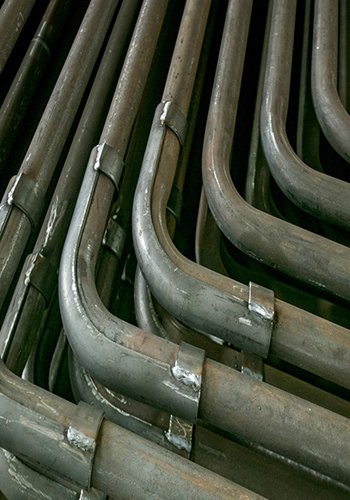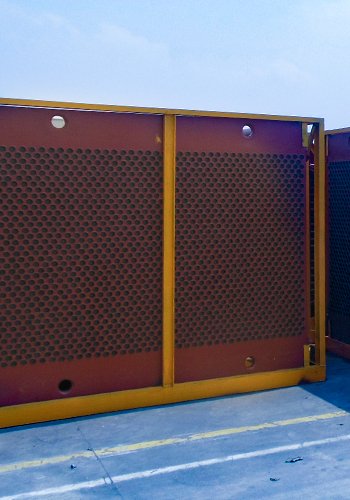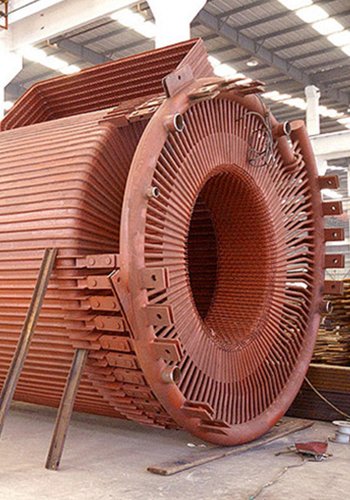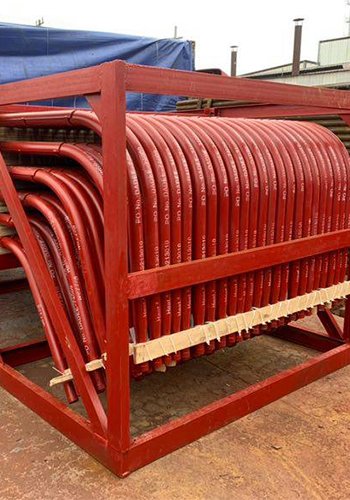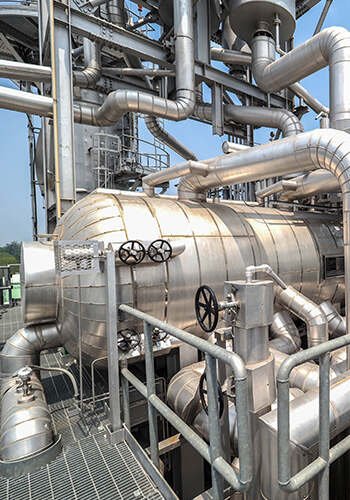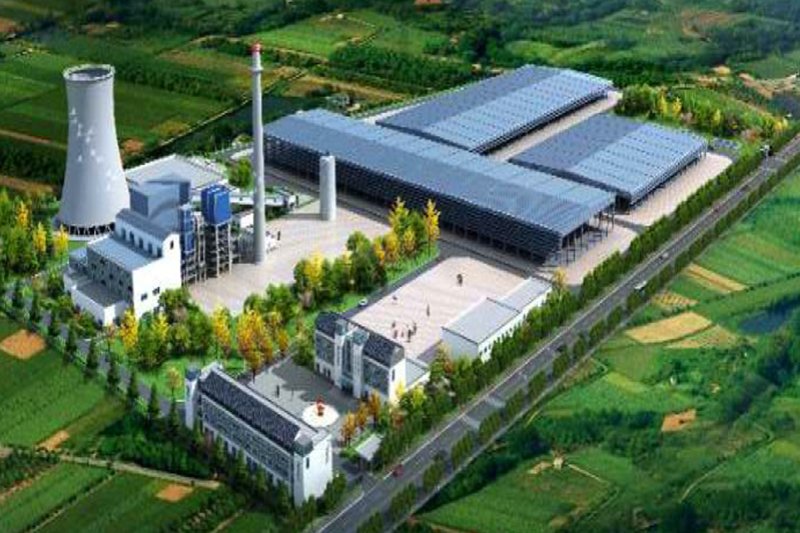In the realm of oil-fired gas boilers, the superheater stands as a critical component. It simplifies combustion through an automated system, ensuring efficiency and safety. However, superheater issues, like over-temperature conditions, demand attention.
Overheating, often caused by factors like air preheater air leakage and high-temperature corrosion, poses significant threats. To counter these challenges, meticulous control measures are vital.
Proactive steps include maintaining combustion stability, monitoring steam bag levels, and controlling feed water systems. By addressing these concerns, we secure the superheater’s reliable performance, ensuring the smooth operation of oil-fired gas boilers.
A Closer Look at Oil-Fired Gas Boilers
When it comes to oil-fired gas boilers, they are quite a unique breed. You see, they harness the power of both oil and gas, creating a dual-fuel wonder [1]. Instead of relying on a complex array of grates or fancy mechanisms to deal with leftover residue, these boilers keep things simple. They work their magic by spritzing the fuel mixture right into the heart of the fire chamber.
But here’s where it gets even more fascinating. These boilers are all about automation. They have a clever combustion control system that practically runs the show on its own. It’s like having a trusty sidekick who handles the tough stuff while you sit back and relax. And the best part? They do this while maintaining high combustion efficiency and keeping the environmental impact low. So, they’re not just smart; they’re eco-friendly too [2].
Safety is a top priority here. These boilers come equipped with alarms and a bunch of other nifty devices to ensure everything runs smoothly. It’s like having a guardian angel watching over your heating system, giving you peace of mind.

Analyzing Over-Temperature Issues in Oil-Fired Gas Boiler Superheaters and Implementing Protective Measures
When we dive into the world of oil-fired gas boiler superheaters, we find ourselves facing a critical challenge – over-temperature conditions. In these extreme high-temperature scenarios, superheaters are particularly susceptible to a phenomenon known as creep damage. The regular operating temperature for a superheater usually hangs below 570 ℃, while the temperature of the exhaust flue gas at the tail end can skyrocket to a scorching 900 ℃. This situation places the superheater in a prolonged state of intense heat, which, over time, takes its toll. The superheater’s crystalline structure begins to suffer from super-temperature oxidation, and the relentless assault of the flue gas leads to high-temperature erosion, oxidation, and brittleness. This acceleration in superheater aging significantly shortens its lifespan. In the worst-case scenario, it can result in high-pressure situations, potentially causing pipes to burst.
The causes of superheater over-temperature are multifaceted, and in this discussion, I’ll be focusing on some of the more common culprits. We’ll also delve into strategies aimed at safeguarding superheaters from these temperature-related challenges.
When it comes to the air preheater in our oil-fired gas boiler, it’s a crucial component for ramping up combustion intensity and boosting thermal efficiency. This trusty gadget helps to alleviate the scorching temperatures of the flue gas, reducing energy consumption in the process and ultimately cooling down the flue gas as it passes through the superheater. But here’s the catch – if the air preheater starts to leak, things can get heated, and not in a good way.
Let’s break down the reasons behind air preheater leakage and how we can shield our boilers from this issue:
Causes of Air Preheater Leakage:
- Gap-Related Leakage: In the world of air preheaters, especially the rotating ones, temperature differences caused by the rotating mechanism can trigger thermal expansion. This leads to gaps forming between static and dynamic parts, and over time, these gaps can widen, increasing the chances of leakage.
- Low-Temperature Corrosion: The fuel we use in our oil-fired gas boilers often contains sulfur. During combustion, sulfuric acid substances can form, and when the temperature difference is just right, moisture condenses, creating acidic liquid. This can damage the air preheater’s seals and even cause them to fail. Dust and fuel particles can also accumulate in these condensation spots, perpetually corroding the surfaces and worsening the leakage.
- Structural Changes: Over time, the rotor structure can tilt due to the radial thrust of the gear. This gradual increase in tilt angle shifts the rotor’s center of gravity from its original position, leading to instability and periodic opening and closing of the sealing surface. Eventually, this results in significant gaps and air leakage.
Protective Measures to Prevent Air Preheater Leakage:
So, what can we do to prevent or reduce air preheater leakage? Here are some strategies:
Two-Way Double Sealing: During furnace overhauls, consider switching from single one-way sealing to two-way double labyrinth sealing. This minimizes seal loss due to air leakage.
Rotor Adjustment: Fine-tune the air preheater rotor during maintenance to align the center of gravity and stabilize the frame. This helps reduce deformation caused by rotor vibration.
Corrosion-Resistant Materials: To combat low-temperature corrosion leakage, opt for corrosion-resistant materials. Enamel materials, for instance, can be used in the air pre-conditioner’s low-temperature sections, effectively eliminating low-temperature corrosion.
By implementing these measures, we can keep our air preheaters in tip-top shape, ensuring they perform their crucial role without causing any unwanted overheating in our oil-fired gas boilers.
In our trusty oil-fired gas boilers, the heat-absorbing parts, such as the furnace water-cooled wall, play a crucial role in absorbing the intense heat generated during combustion. These parts have a nifty trick up their sleeves: they form a dense oxide film structure when exposed to high temperatures and oxygen. This film acts as a shield, preventing the metal surface from bonding and corroding. However, things get tricky when sulfur and chlorine enter the equation.
Causes of High-Temperature Corrosion Bonding:
- Poor Fuel Quality: One of the primary culprits behind high-temperature corrosion is low-quality fuel loaded with impurities. Sulfur-based and chlorine-based substances in the fuel come into direct contact with metal surfaces. Under the extreme heat of combustion, these substances break down, producing monomers like elemental sulfur and iron sulfide. In the presence of water and oxygen, sulfur-containing oxides react and form hydrochloric acid and chlorine gas. These corrosive substances eat away at the oxide film, exposing the metal parts to smoke and leading to high-temperature corrosion. This is often exacerbated by larger fuel particles, which further erode the protective film, reduce heat absorption efficiency, and increase flue gas outlet temperatures. In severe cases, it can even lead to pipe bursting accidents.
- Impact of High-Temperature Flames: Sulfate substances in a high-temperature state rapidly decompose, creating acidic substances that worsen the corrosive environment. Meanwhile, fuel particles in a high-speed liquid state physically impact and wear down the protective film on heat-absorbing parts, intensifying high-temperature corrosion.
Protective Measures Against High-Temperature Corrosion in Oil-Fired Gas Boilers:
Now, how can we shield our heat-absorbing parts from this troublesome high-temperature corrosion? Here are some protective measures:
Precise Combustion Control: Adjust combustion control promptly and accurately. Develop a well-thought-out air and fuel mixture program to reduce the likelihood of flames directly impacting heat-absorbing parts or flue gas erosion.
Fuel Quality Improvement: Enhance the quality of fuel by installing sulfur removal devices or employing sulfur removal processes at the burner’s front end. This significantly reduces the entry of sulfur substances into the combustion zone. Consider using methods like microwave elimination or high magnetic desulfurization.
Fuel Additives: Incorporate fuel additives to lower combustion temperatures. Some companies use additives containing lactic acid compounds, which reduce initial combustion temperatures. These additives also alter fuel particle structures, improve atomization, and minimize the involvement of sulfur substances in oxidation.
Corrosion-Resistant Surface Treatments: Implement surface treatment processes using heat-infiltration aluminum. This forms an alumina surface layer on the metal, creating a double protective layer with an aluminum-iron alloy in the middle. This significantly extends the lifespan of the parts in the same corrosive environment, effectively enhancing the corrosion resistance of the metal surfaces exposed to flue gas.
By implementing these protective measures, we can keep our oil-fired gas boilers running smoothly, without the headache of high-temperature corrosion bonding.
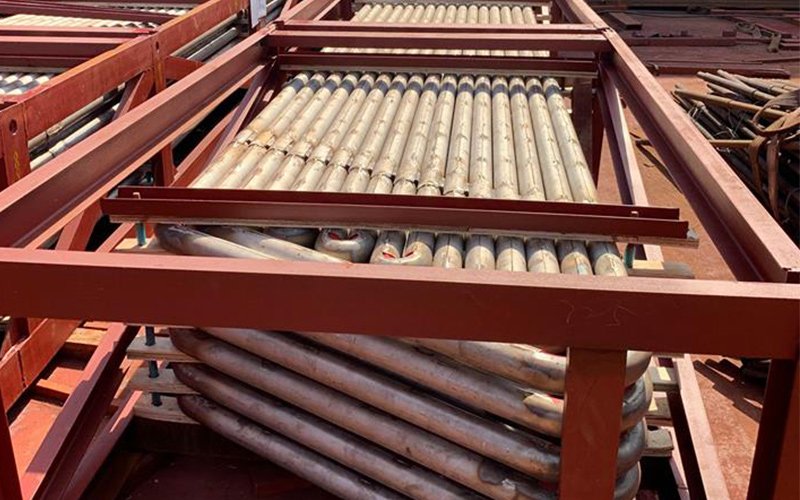
Control Measures for Oil-Fired Gas Boiler Superheater
In our quest to protect the superheater of our oil-fired gas boilers, we must look beyond technology and hardware considerations. It’s equally important to adopt control measures during production and operation, ensuring that the superheater operates smoothly and efficiently.
When it comes to the protection of our oil-fired gas boiler superheater, we must consider both technological aspects and operational control measures. Ensuring the effective operation of the superheater is critical, and this discussion will focus on specific operational control measures from the perspective of maintaining stability in oil-fired gas boiler superheater operation.
1: Ensuring Combustion Stability and Monitoring Boiler Load Fluctuations
Maintaining stability in the combustion system is paramount to guaranteeing the smooth operation of the superheater. Let’s break down this principle into two critical aspects: controlling boiler load fluctuations and ensuring combustion stability.
1. Monitor Boiler Load Fluctuations: Oil-fired gas boilers are often connected to systems with relatively long distances between nodes. Within this system, gas balance perturbations can occur and affect the long-term evaporation stability. Overloading the boiler can lead to a sudden increase in steam production, which isn’t conducive to the superheater’s normal operation. To address this, it’s essential to closely monitor pressure fluctuations at various nodes. A standard fluctuation value of △ 10 t/h can be used as a reference point.
2. Ensure Combustion Stability: Combustion stability hinges on two primary factors: fuel quality and variations in fuel pressure. To begin, establish a continuous monitoring system for fuel gas quality. Regularly check factors such as the fraction ratio, combustion calorific value, unsaturated hydrocarbon components, and other indicators to guarantee fuel quality. Controlling fuel nozzle coking is crucial to maintaining stable combustion. Implement measures like constant temperature heating devices and fuel filters to control fuel impurities and eliminate the potential for superheater combustion issues. Furthermore, maintaining pressure stability in the combustion chamber is crucial. Pressure levels in this chamber can influence flame height, so it’s essential to sustain a micro-positive pressure in the combustion chamber. This helps reduce leakage points and ensures a well-behaved flame, minimizing direct impacts on the furnace wall.
By closely monitoring boiler load fluctuations and ensuring combustion stability through fuel quality control, pressure regulation, and other measures, we can maintain the optimal operation of our oil-fired gas boiler superheater. These measures not only enhance efficiency but also contribute to the long-term reliability of the superheater.
2 Maintaining Steam Bag Operating Level and Ensuring Feed Water System Control
In the realm of safeguarding our oil-fired gas boiler superheater, we delve into the vital aspects of maintaining the operating level of the steam bag and exercising strict control over the feed water system. This control spans changes in feed water and steam, encompassing water flow rate, steam quantity, water quality, and more, all with the goal of ensuring the seamless operation of our oil-fired gas boiler superheater.
1. Steam Bag Operating Level: To begin, it’s imperative to maintain a well-balanced operating level within the steam bag. This not only eliminates the risk of a “low level” situation that could lead to a “dry boiler” scenario but also prevents the liquid level from rising too high, which can result in saturated steam carrying excessive water. This can adversely affect and worsen the corrosion of the superheater.
2. Water Quality and Flow Control: Next up is the meticulous control of water quality and water flow, aimed at mitigating the impact of scale buildup on the metal wall of pipes. Simultaneously, it’s crucial to strictly regulate water flow within the superheater cooling device to ensure its stability. Typically, a fluctuation value of ± 5% for the flow rate is set. If this threshold is exceeded, immediate measures must be taken to reduce water flow.
3. Steam Circulation and Blowout Control: Finally, managing the circulation and blowout volume of steam is vital. This prevents excessive steam pressure during furnace start-ups, shutdowns, and blowout processes, which could otherwise damage the oil-fired gas superheater.
By meticulously controlling these aspects, we can ensure the longevity and reliable operation of our oil-fired gas boiler superheater, minimizing the risk of potential issues and maximizing efficiency.
In conclusion, the proper functioning of the superheater in oil-fired gas boilers is of paramount importance for their overall operational efficiency and safety. By analyzing the root causes of superheater over-temperature issues and implementing targeted measures such as reducing air leakage and maintaining fuel quality, we can significantly reduce the occurrence of over-temperature problems. Moreover, the development and implementation of effective control measures, including load stabilization and liquid level control, further ensure the optimal performance of the oil-fired gas boiler superheater and, consequently, the entire boiler system. This approach guarantees a safe and stable operation, safeguarding both equipment and operational continuity.
References:
[1] Zhao Qinxin . Structural Design and Diagram of Oil and Gas Boiler [M]. Xi’an: Xi’an Jiaotong University Press, 2002.
[2] Zhao Mingxin, Wang Lili. Characteristics and Prospects of Oil and Gas Boiler [J]. Industrial Technology, 2015(10):94-95.
DHB Boiler
Discover The Superior Quality And Cutting-Edge Technology Of DHB Boilers. Explore Our Range Of Biomass Boilers, Waste Heat Boilers, And More. Take Your Industrial Operations To New Heights With DHB Boiler.
